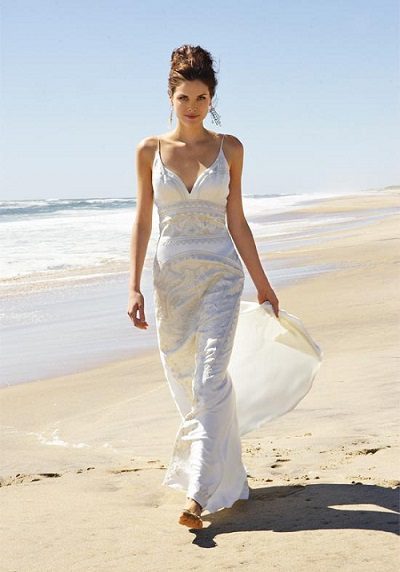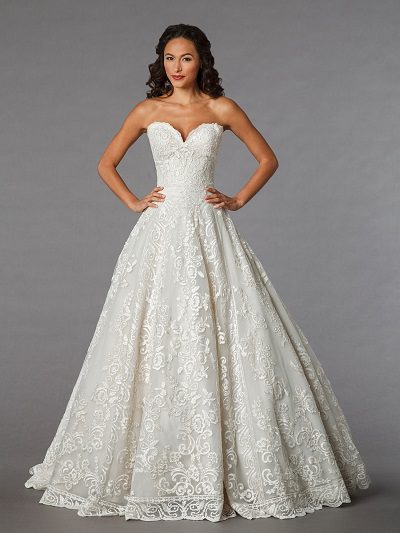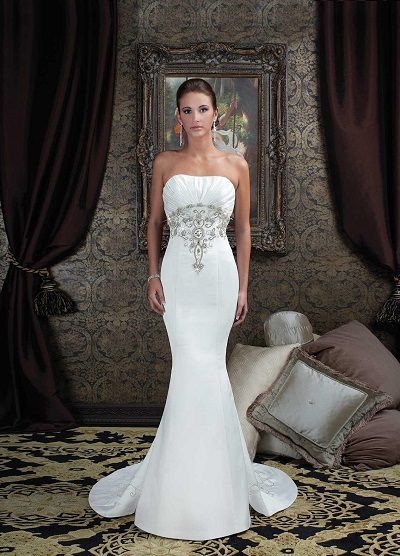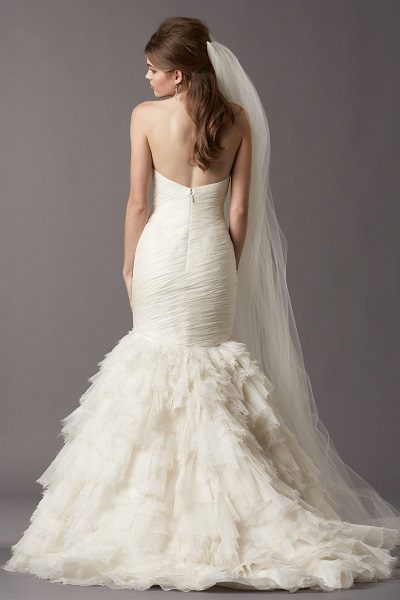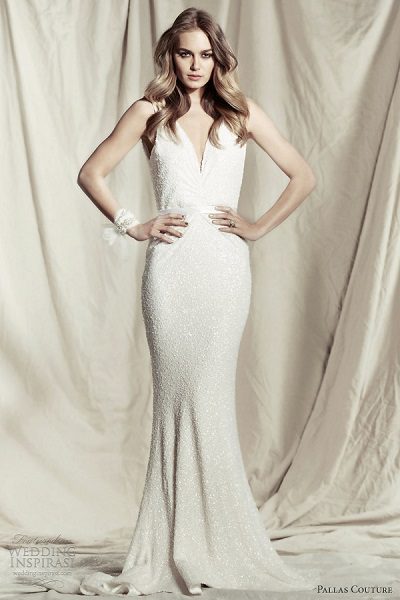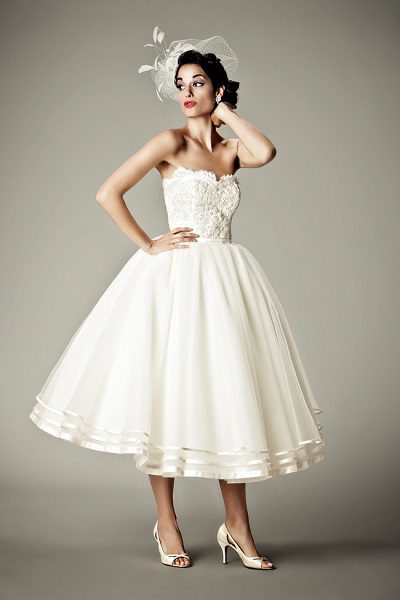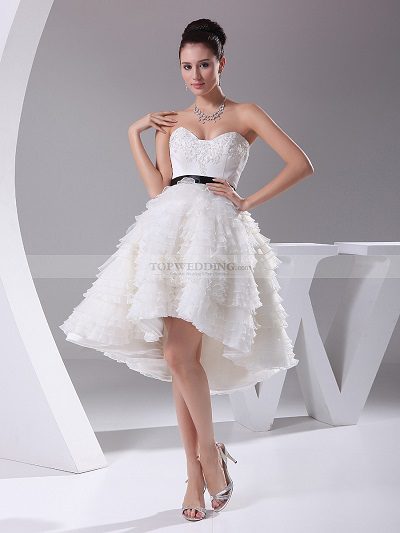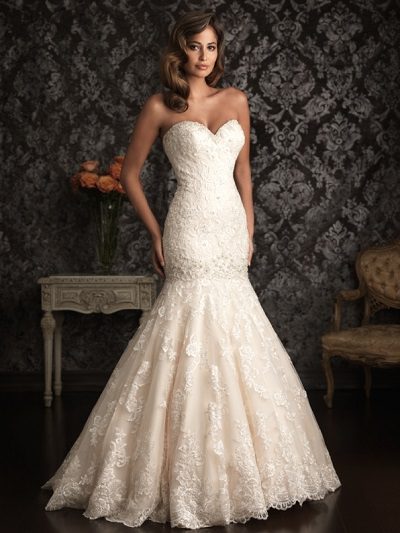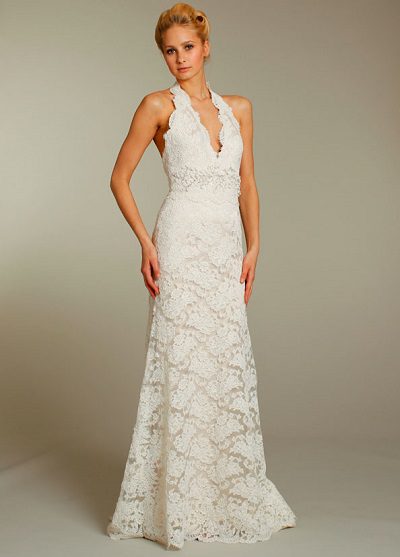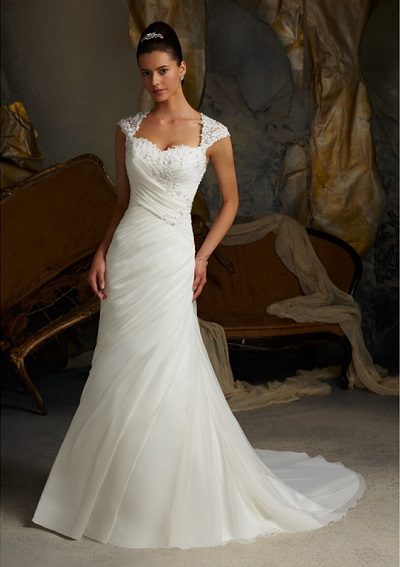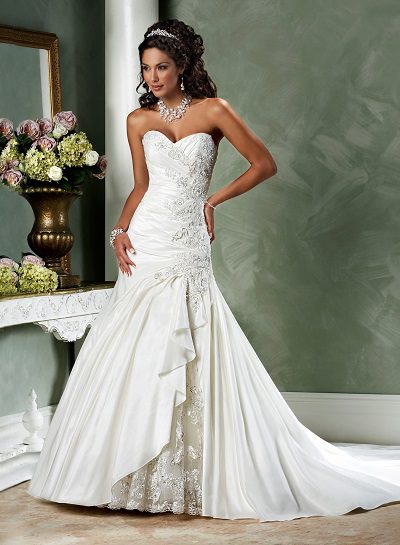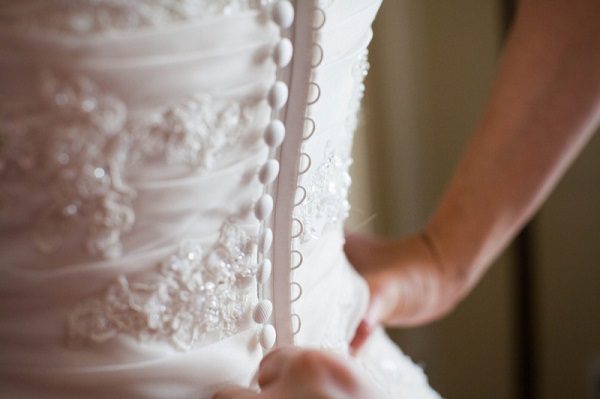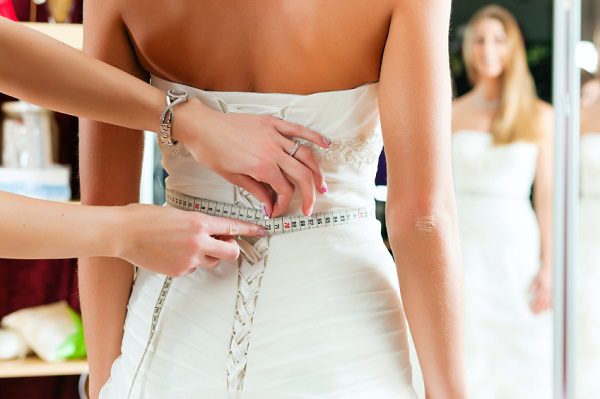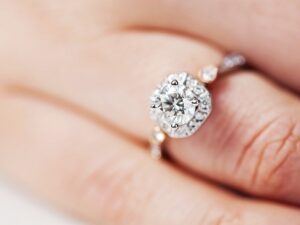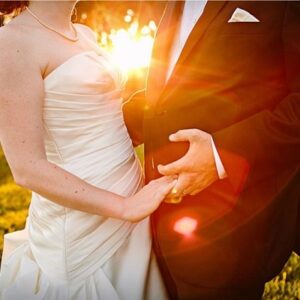The wedding dress is one of the most important investments of the wedding day. It is an article of clothing that the bride has likely dreamt about since she was a little girl and the dress that she will wear when her fairytale comes true. The wedding dress industry has become such a large and unique niche in the fashion world, with plenty of high-end designers setting fashionable trends year after year, meaning that there are literally thousands of different styles of bridal gowns to choose from. When shopping for something as meaningful and significant as your wedding dress, there are a few things you need to know beforehand. This comprehensive guide will provide you with all the details you need to know when you embark on your dress shopping journey.
Set a Budget
As with everything regarding your wedding, you will need to set a budget for your wedding dress. Because there is essentially no limit to how much you spend on your gown, the amount you set as your budget is entirely dependent on your total wedding budget and the importance of the dress to you. If you have your heart set on a vintage designer gown that costs thousands of dollars, then you will have to allocate a larger portion of your total budget to the dress. If you don’t need the designer label and simply want a pretty dress that looks good, then you can reduce your budget drastically. We suggest researching dress costs and finding a price tag that you’re comfortable with, then setting your dress budget slightly higher than that number to account for any alterations and accessories you add on later.
Photo Credit: Wedding See
Location is Key
Before you tell yourself that you must have a princess ball gown with an extended train, think about where you are getting married. The ceremony and reception location, as well as the travel between the two venues, are huge determining factors in the type of gown you can wear. For example, if you are having a beach or backyard wedding, you don’t want to have a gown with a train dragging on the ground. If you know that it will be very hot or humid at your outdoor wedding, sleeves and heavy fabrics probably won’t be very comfortable. Think about the weather and the locations in which you’ll be wearing your dress and you can start moving forward to finding your dream gown.
Photo Credit: Dresses Wed
Dress Silhouettes
In addition to finding a dress that fits your location, you also want to find a silhouette that flatters your body type. Bridal gowns come in a large variety of silhouettes, so if you’re not sure what style you like, it may be a good idea for you to try on one of each type so you can see which looks best on you.
A-Line or Ball Gown
A-line dresses or Ball Gowns are fitted at the bodice and flows out to the ground like the letter A. They are the typical fairytale princess dress and are elongating and flattering on any body type thanks to their flowy nature.
Photo Credit: Kleinfeld Bridal
Mermaid
Mermaid gowns are fitted to the body from the chest to the knee and flare out from the knee to the hem. These types of dresses are excellent for those who want to accentuate their curves or those who want to create the illusion of curves.
Photo Credit: Wedding Dy
Trumpet
Similar to mermaid gowns, a trumpet silhouette dress is fitted to the body until the mid-thigh, then flares out gradually to the hem. The bottom of the dress resembles the mouth of a trumpet, hence the name. Trumpet dresses are in between mermaid gowns and A-line dresses, and they are ideal for those who wish to bring focus to the waist and hip area.
Photo Credit: Tops Wedding
Sheath or Column
Sheath or column dresses are long, slinky wedding gowns that flow straight down from the neckline to the hemline. Sheath dresses look great on lean frames, as well as those with curvier figures who are willing to show them off.
Photo Credit: Pallas Couture
Tea-Length
A popular trend in recent years, tea-length dresses are gowns with skirts with shorter hemlines, typically falling between the ankle and the knee. Tea-length gowns look great on all body types and are ideal for those who want to show off their shoes and pedicures.
Photo Credit: Glam Dress
Mini
A mini-style wedding dress is not necessarily one with a miniskirt, but rather the skirt’s hemline falls above the knee. Ideal for anyone who favors this style of dress over the traditional floor-length gown.
Photo Credit: Top Wedding
Wedding Dress Fabrics
We mentioned earlier that the location of your wedding should strongly affect your wedding dress decision. Bridal gowns come in a variety of fabrics that range from breathable and lightweight to heavy and warm. These are the most commonly used fabrics in wedding dresses today.
Brocade – A rich silk fabric that has a raised woven pattern.
Charmeuse – A type of sleek silk that is lightweight and soft to the touch.
Chiffon – A delicate, sheer fabric that is often crinkled, ruched and layered due to its transparent nature. Chiffon gowns are lightweight and are great for warm weather weddings.
Duchess Satin – A lightweight hybrid of silk and polyester, woven into a satin finish with a beautiful sheen. It is the popular choice for formal ball gowns and gowns with full skirts.
Photo Credit: Sangmaestro
Dupioni – Similar to shantung, dupioni is made with thicker, coarser fibers and has a slight sheen. Because it is slightly thicker, the overall look of the gown can be more structured.
Faille – A soft, textured fabric with a subtle striped appearance. It has a slight sheen and is made from silk threads.
Georgette – Sheer and lightweight with a crepe surface.
Jacquard – A fabric with a woven pattern, typically floral or paisley.
Jersey – A very elastic knit fabric that is breathable and comfortable for warm weddings.
Lace – There are many different types of lace used for wedding dresses, but overall it is a fragile, open material that can be used as an overlay or for the entire dress with proper lining.
Photo Credit: Allure Bridals
Mikado – Blended fibers that are usually heavier than silk and slightly luminous.
Organza – Crisp and sheer like chiffon, with a stiffer texture
Satin – A shiny fabric that is made from silk, satin is a commonly used fabric in wedding dresses. Not to be confused with duchess satin which is actually a more affordable satin blend.
Shantung – Similar to a raw silk and has a slightly rough, uneven texture. It has a high sheen and a casual feel, making it great for summer weddings.
Silk – Silk is the most popular and expensive wedding dress fabric. It is smooth and soft to the touch. Many wedding gowns use a silk blend to reduce costs, and many popular dress fabrics are made from silk threads.
Silk Crepe – Silk crepe is light, soft and thin and is versatile enough to wear both day and night.
Taffeta – A crisp, textured, lightweight fabric. It rustles when it moves and is reminiscent of high school proms.
Tulle – Tulle is sheer netting that makes gorgeous full skirts in wedding dresses. It is the same fabric used in ballerina tutus.
Photo Credit: JLM Couture
Velvet – A soft, thick fabric that is felted on one side and plain on the other. It is quite heavy and is great for winter weddings.
Neckline Options
Bateau – Follows the curve of the collarbone to the top of the shoulders.
Halter – Straps wrap around the back of the neck.
Photo Credit: JLM Couture
High neck – High neckline resembles a t-shirt crew neck.
Off the shoulder – The straps or sleeves sit below the shoulders typically with a straight-across neckline.
One shoulder – Strap across one shoulder only with a diagonal neckline.
Queen Ann – High collar at the back of the neck that swoops low across the bust.
Photo Credit: Sammy Dress
Scoop – U-shaped neckline with straps; depth varies from high cut to low cut.
Sheer – Sheer netting or lace covers the upper chest area above the bust.
Square – A straight-across neckline that meets with straps in a 90 degree angle.
Strapless – Strapless necklines can vary from straight across, slight curve to sweetheart cuts.
Sweetheart – The neckline is curved like the top half of a heart at the top of the bust. Can be strapless or with straps.
Photo Credit: Kevin Kaylee
V-neck – V-shaped neckline with straps; depth can vary from very low cut to a moderate cut.
Gown Details and Embellishments
Applique -Hand-sewn detail that is three-dimensional; for example, silk flowers, fabric rosettes or feathered details.
Beading – Beads that cover different areas of the gown, typically the bodice. Beads can be crystal, pearl, silver or gold.
Buttons – Buttons on a wedding dress can either be decorative or functional. Typically buttons are found along the back of the gown. They can be fabric-covered, uniquely-shaped or colored.
Photo Credit: A Day To Remember
Crystals – Shiny crystals and gems such as rhinestones add a beautiful sparkle to the traditional wedding gown. They are usually used to ornament tulle skirts or the bodice of a dress.
Embroidery – Embroidery is used to add a textured pattern to a dress and is sewn onto the dress with thread.
Photo Credit: JLM Couture
Layering – A light top layer of tulle, lace or chiffon that is sheer and layered over the rest of the gown. Usually seen over the full skirt.
Ruching – Gathered fabric, typically on the bodice, gives bridal gowns dimension and texture.
Sequins – Another way to add sparkle to your gown, sequins are small plastic discs that are sewn onto a dress.
Tucking -Small folds of fabric are stitched down by hand to create a soft surface texture.
Wedding Dress Trains
Sweep – Sometimes referred to as the brush train, it’s the shortest type of train. Usually sweep trains’ back hems are only a few inches lower than the front hem.
Court – Court trains are slightly longer than sweep trains and extend about three feet behind your waist.
Chapel length – Chapel length trains extend about four feet from the waistline.
Cathedral length – Cathedral length trains are the longest and most dramatic. They typically extend about seven feet from the waistline.
Photo Credit: Vogue
How to Shop for Your Wedding Dress
You should start looking for your dream dress about six to eight months before your wedding day. This leaves you plenty of time to browse, shop, find and alter your wedding dress. Double check with your ceremony venue to see if there’s any specific dress code for religious locations – you wouldn’t want to show up wearing a beautiful strapless gown only to be told you have to cover up as you walk down the aisle. We suggest taking a half day off of work to shop during off-peak hours; this way you won’t be as rushed or pressured as you would be on a busy weekend day.
Photo Credit: Wed Alert
When you are ready to start making appointments to try on bridal gowns, make sure you bring a few printouts or bookmarked magazines of the styles you like. The salesperson that you work with will be able to pull out a few different options that go along with the styles that you like. We strongly recommend keeping an open mind and trying styles that you may not have originally considered – dresses look very different hanging on the rack versus how they look on. Trust your salesperson to find gowns that will suit your body type, but don’t be afraid to tell her no if you really don’t like something. If you’ve already found a specific dress that you know you want to try on, call the shop beforehand to see if they have it on hand in your size. Also keep in mind that wedding dress sizes typically run at least one or two sizes smaller than regular clothing, so don’t let the numbers on the tags discourage you! Even if you plan on losing weight before the wedding day, we suggest purchasing a gown that fits you now, then taking it in later depending on how much weight you lose. It’s easier to take a gown in than make it bigger!
Photo Credit: Proper Southern Weddings
Finally, when you are attending all of your various fittings, make sure you wear proper undergarments that will work with the types of gowns you try on. A nude strapless bra and seamless panties will work well with most dresses, and the salon will most likely have a slip for you to try on underneath your gown. Bring your closest friends whose opinions you trust and are not afraid to give you their honest feedback.
Knowing When to Stop Shopping
The most valuable piece of advice we can give you about wedding dress shopping is to trust your instincts. It’s ok to fall in love with the first dress you try on! It’s a common wedding myth that you shouldn’t buy the first wedding dress that you try on, because there’s always the chance that you’ll see another one later that you love more, or is much cheaper, and it’ll be too late. This is totally untrue! If you absolutely fall in love with the first gown you try on, trust your instincts. Go with the dress that makes you look and feel incredible, and that you can picture yourself saying “I do” to the love of your life in. If you’re still not ready to commit right away, ask the salon if you can place the dress on hold for a few days so you can come back and purchase it later.
Photo Credit: Wed Alert
When you are ready to commit to a gown, make sure that your wedding dress contract includes all of the things that you and the salesperson talked about verbally. Read the contract carefully to make sure everything is correct, from the size and color to the designer and style number. Check the measurements, delivery date, deposit amount and the number of fittings included with the total price. All of these things should be included in your written contract so that you can ensure you receive the right dress at the right time.
Alterations and Extras
Remember when we told you to set your dress budget slightly higher than what you’re willing to spend on the gown? This is to account for extras like sales tax, shipping costs and alterations as well as accessories like a veil, sashes, gloves, jewelry shoes and anything else you might need to turn you into a beautiful princess on your wedding day. Alterations can be as minor as shortening the hem half an inch or as substantial as taking the bodice in a few sizes. Most wedding dresses can be taken in up to four whole sizes, while they can only be let out one size, max. Therefore, we strongly encourage you to purchase a gown that fits you today and have it taken in if your wedding weight loss plan goes according to plan.
Photo Credit: Wet Clean Us
We hope that our guide provides you with the foundation and knowledge you need to find the perfect wedding dress. There’s so many options and varieties out there that it’s important to conduct adequate research in order to make an informed decision. Your wedding location, weather, dress code and style will help you determine what kinds of dresses might be appropriate, but you never know what kinds of gowns might look fantastic on you, so keep an open mind and try on different styles. Only try on dresses that are within your budget, and bring an entourage of ladies whom you trust. Above all, trust your instincts and you’ll be able to find your dream wedding dress for your perfect day.



